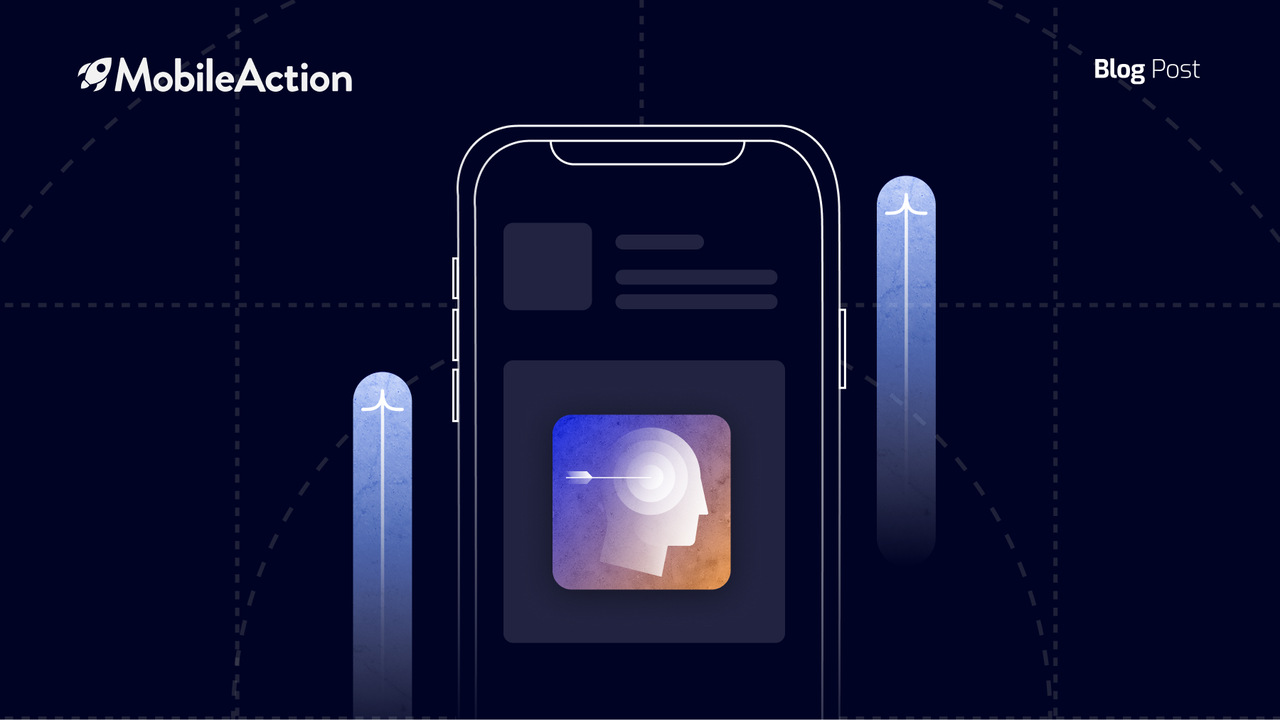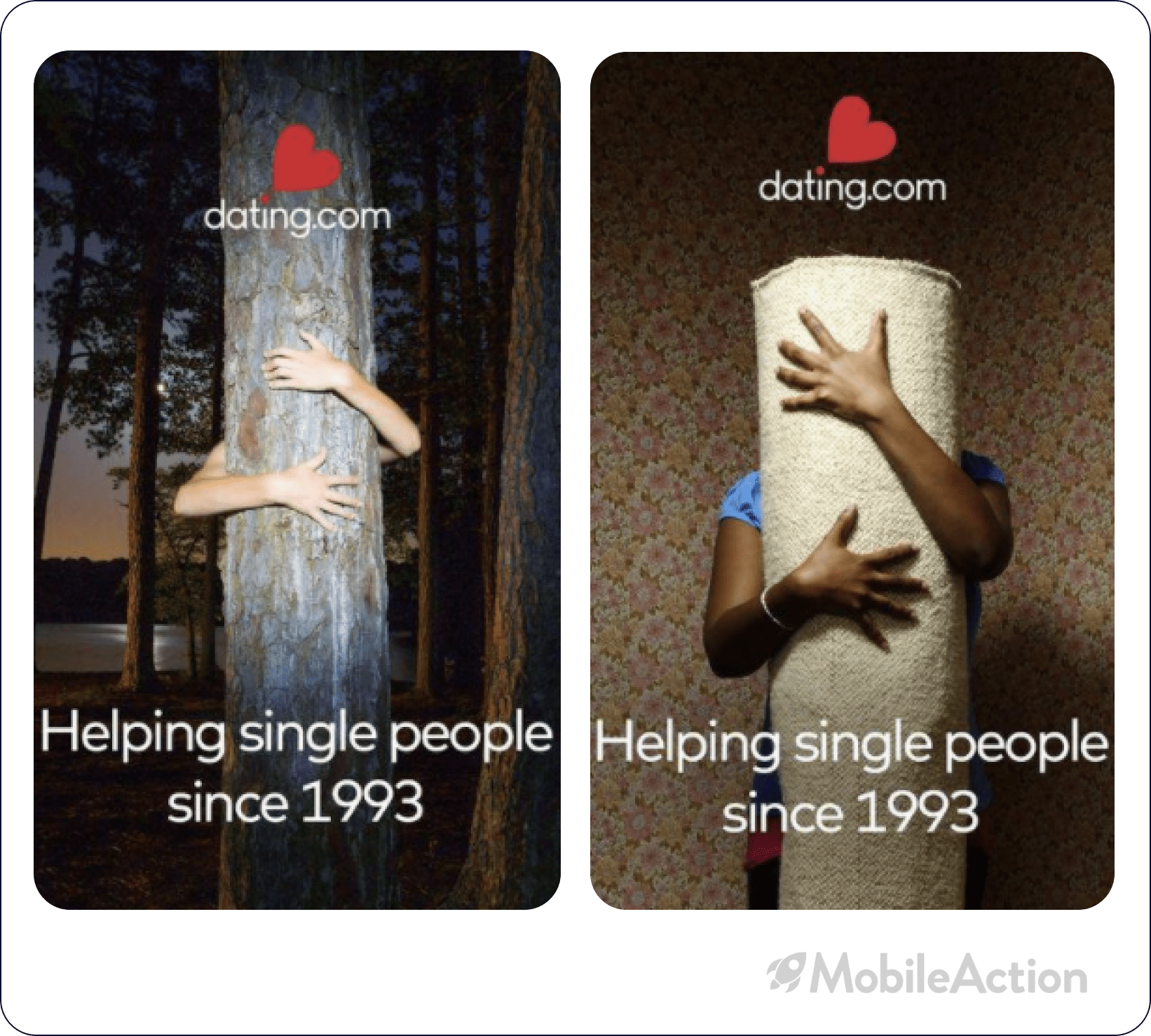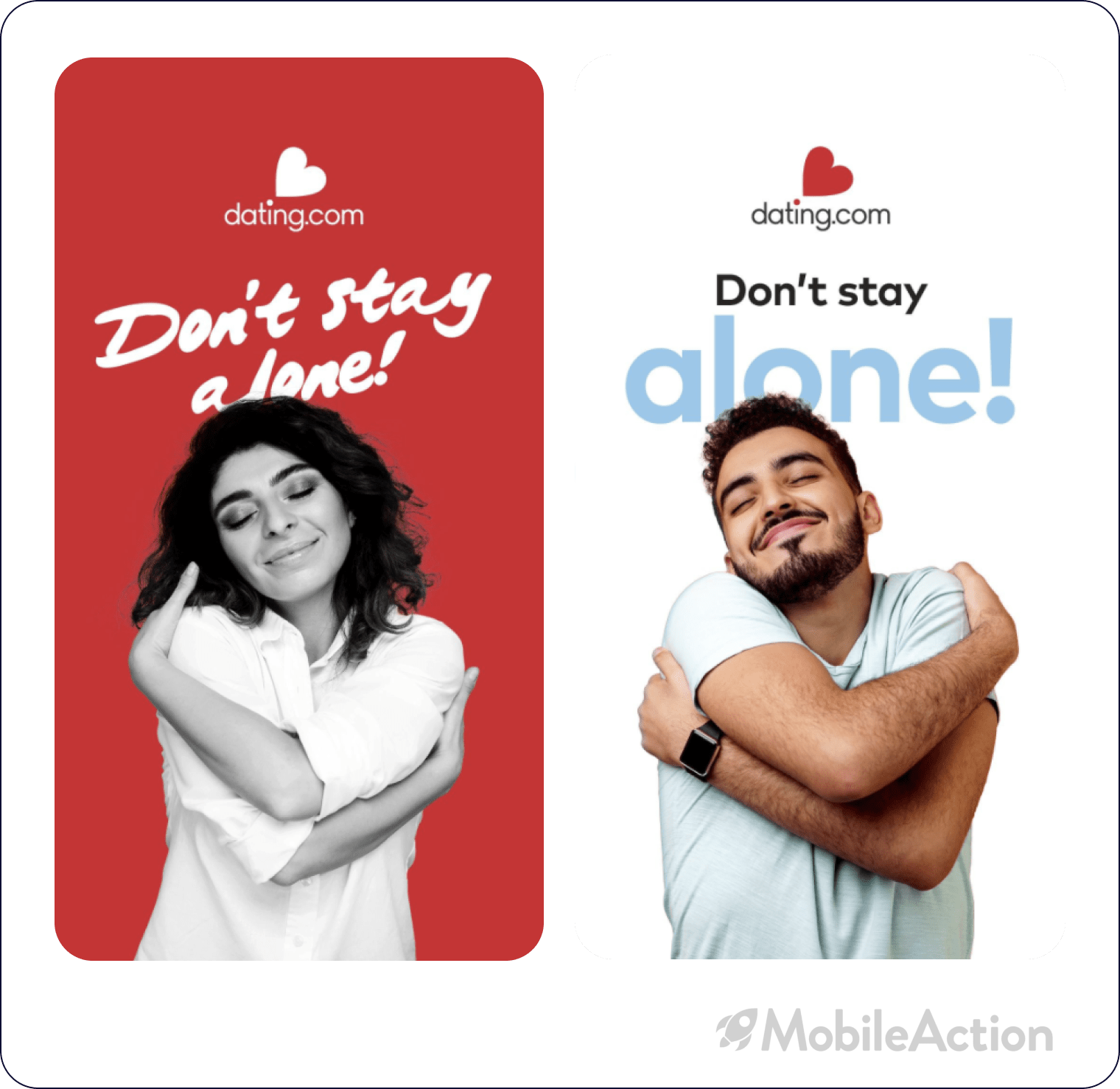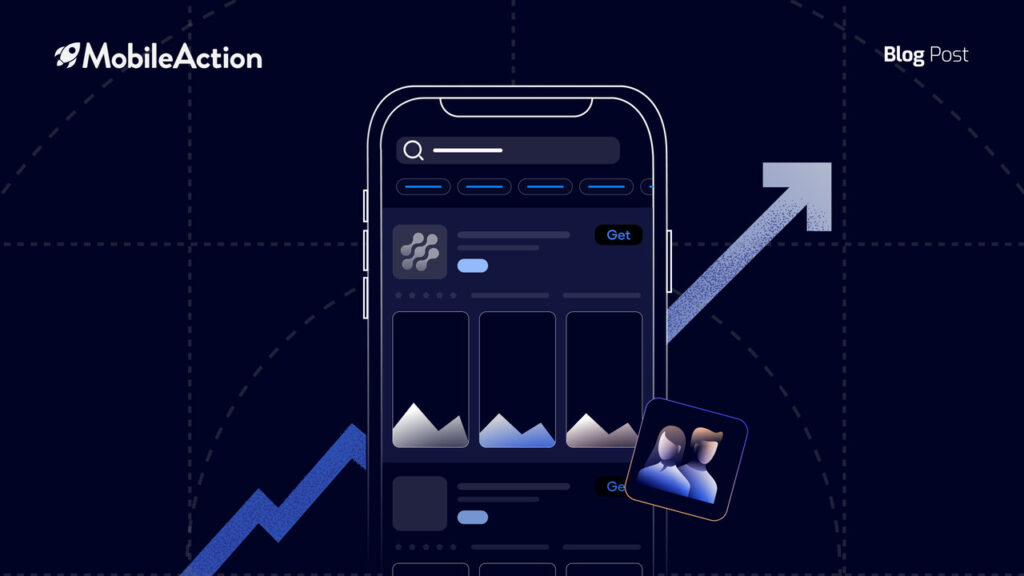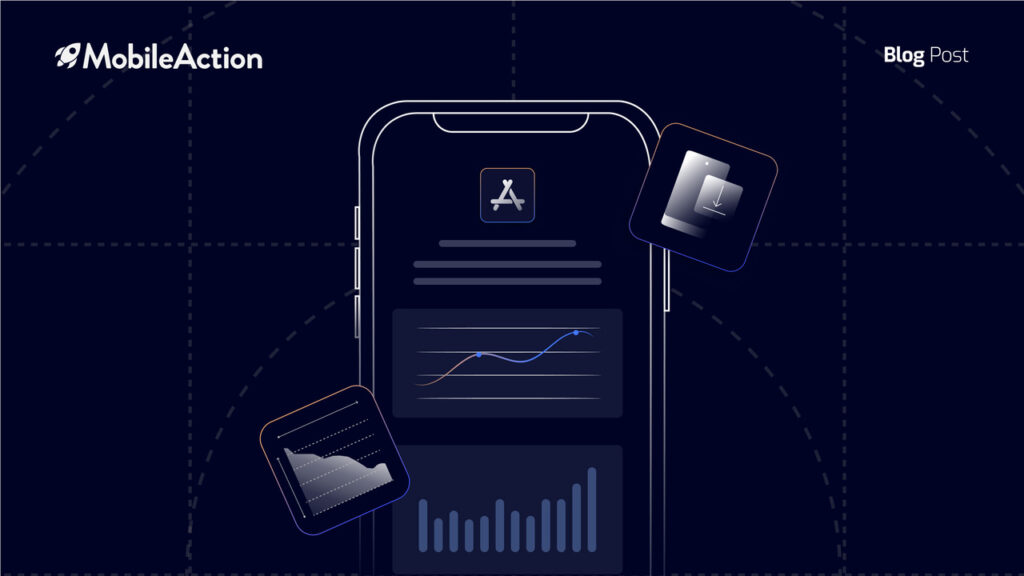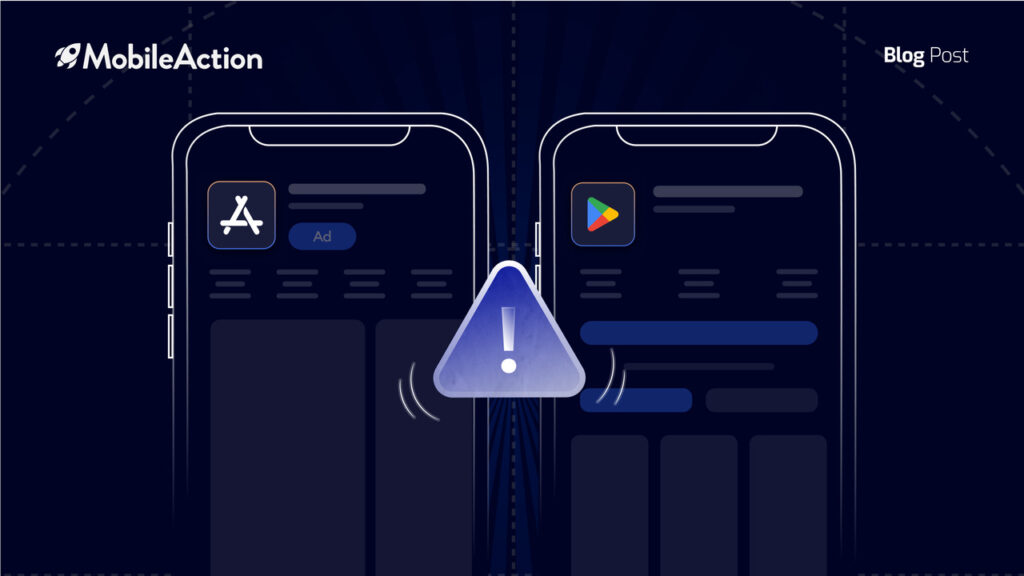Due to changes on digital privacy policies which started with the deprecation of IDFA and similar changes on the way for Play Store, serving personalized ads became harder, making app marketers seek more effective and sustainable ways of driving growth. Even though users’ ATT opt-in rate is around 21%, app marketers can still target theDue to changes in digital privacy policies, which started with the deprecation of IDFA and similar changes on the way for the Play Store, serving personalized ads became harder, making app marketers seek more effective and sustainable ways of driving growth. Even though users’ ATT opt-in rate is around 21%, app marketers can still target the right users and increase conversion rates with the help of an old friend, Contextual Ad Targeting.
In this article, we are going to discuss the rising importance of Contextual Ad Targeting in mobile app marketing and how you can benefit the best from it to empower your mobile user acquisition strategy.
What is Contextual Advertising?
Contextual Advertising is a highly utilized form of advertising in digital marketing. The main idea of Contextual Advertising is to pair up the relevant advertising media with the relevant context to better engage with the user’s interest. For example, showing a clothing ad on a website that talks about fashion is contextual advertising.
Sounds cool but how does it work, right?
Well, it is pretty simple. Just like Search Pages, contextual advertising utilizes several parameters to determine relevance, and based on these, it displays relevant ads on relevant web pages.

App marketers can also benefit from contextual advertising to display their ads in apps where their potential customers spend time at. In this way, click-through rates get better as marketers reach out to the right audience.
Luckily, mobile app marketers can utilize this form of ad targeting in their mobile ad campaigns. The only difference is that they should pair the relevant ad publisher and the ad creative instead of keywords.
Contextual Ad Targeting vs Behavioral Ad Targeting
Let’s begin by explaining how behavioral targeting works. In behavioral targeting, marketers were tracking the user historical data to show personalized ads, which was only possible with IDFA (or AAID for Google Play). As stated earlier, IDFA is no longer able to assist iOS app marketers due to Apple’s App Tracking Transparency policy and similar changes are on the way for the Play Store.
But don’t worry, contextual targeting is making its comeback and providing an alternative method for app marketers in their journey to building ROI positive user acquisition campaigns.
But don’t worry, we are here to show you that you may not even need IDFA for High Conversion Rates.

Why Do You Need Contextual Ad Targeting?
Now let’s highlight the benefits of Contextual Ad Targeting in a Post-IDFA world.
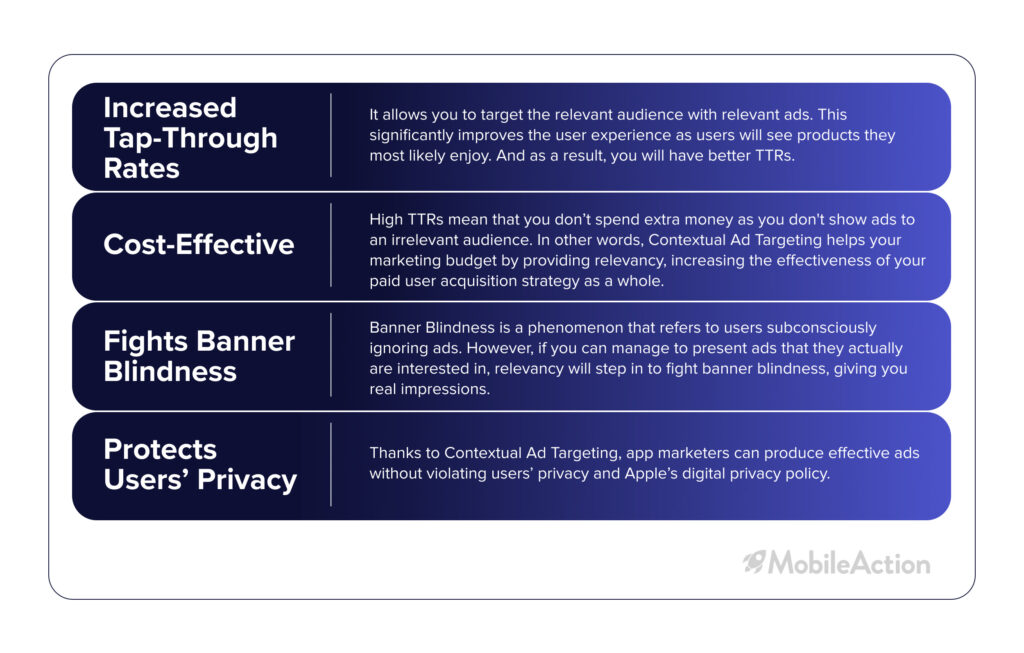
The Rise of Contextual Mobile Advertising
As noted above, IDFA is off the table, app marketers can’t utilize it anymore. Nor can they generate random ads in the hope that the ads reach the right users, right? For these reasons, contextual targeting has become a prominent method of increasing ROAS as it enables app marketers to serve relevant ads to relevant users.
In this context, the use of DSPs grows in importance because, with DSPs, app marketers can distribute their ads to relevant ad publishers by applying different parameters. It is an opportunity that cannot be ignored.
Now let’s talk about how you can collect data to figure out user behavior while complying with the privacy policies in order to make the most out of Contextual targeting.
App Information
You know the old proverb that says tell me your friend and I’ll tell you who you are. It means that you can figure out someone’s character by looking at who they are hanging out with. Well, you can do the same by looking at their apps.
For example, it would not be a wild guess to claim that someone who uses instrument learning apps will most likely enjoy a Piano learning app. Of course, someone who doesn’t have a music app can still enjoy your Piano app, but it’s much more efficient and budget-friendly to show your ads to a relevant audience you know will love it. Thus higher-level data such as app category can be easily used to serve relevant ads to your potential users.

Thanks to our Ad Intelligence, we can easily display and analyze where Simply Piano by JoyTunes get the most of their impressions. Their ads are mostly displayed on gaming apps with 74%, followed by education apps with 5%.
But our glance shouldn’t end there, let’s take a closer look at their top ad publishers.
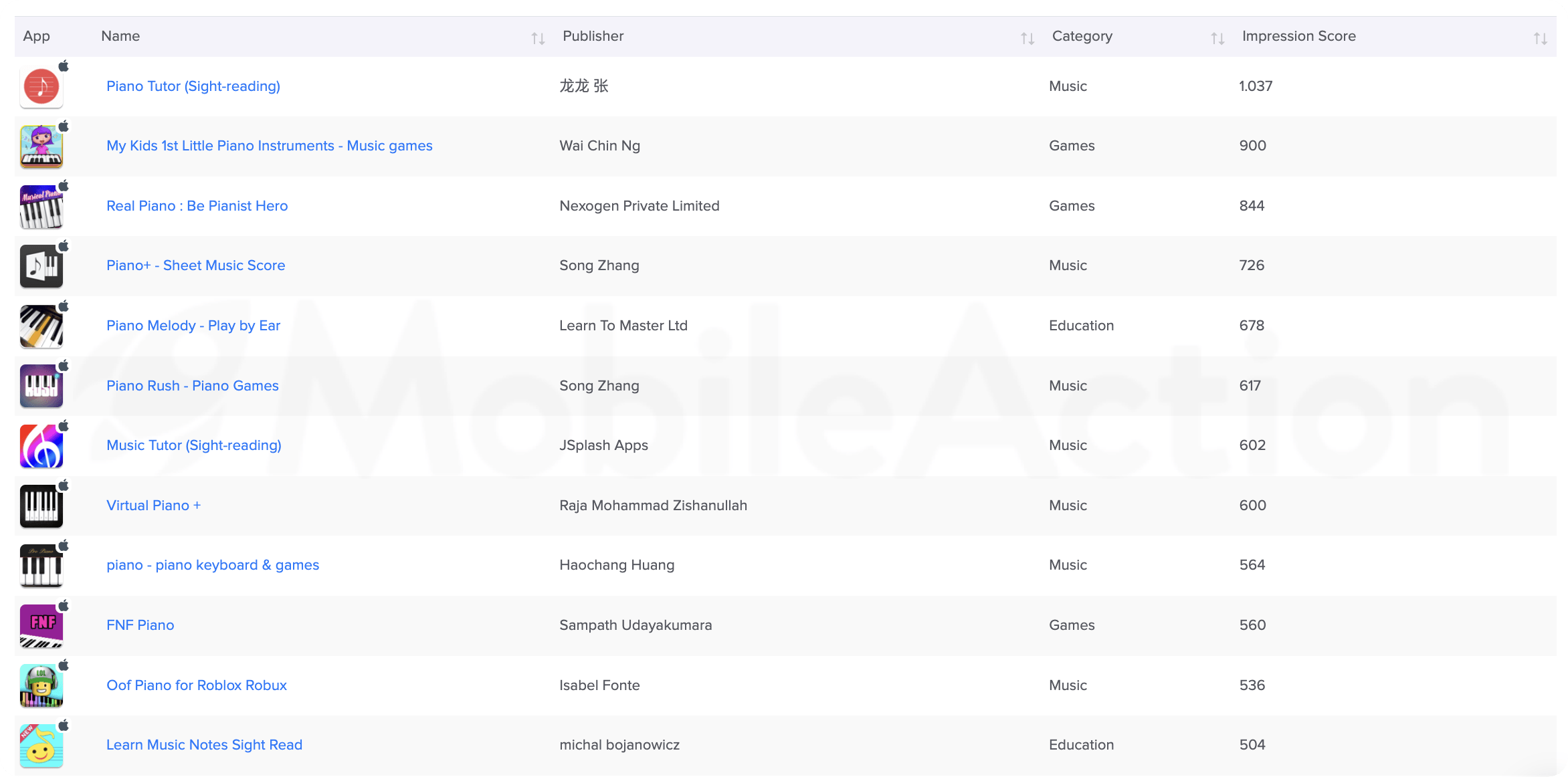
Take a good look at the list and try to find a non-music-related app. Let me save you time. There is none.
As seen, whether it’s listed under music, game, or education the ad publisher stays relevant to the context. In this way, Simply Piano by JoyTunes reaches more relevant users, gets better tap-through and conversion rates.
App Information that can be utilized to improve marketing campaigns:
- App Version
- App Genre
- Impression Depth
- Completion Rate
Device Information
According to Elon Musk, we are already cyborgs, we just have a very slow data rate. Call Musk crazy all you want but he is not wrong. Our biological selves are already connected to our digital selves thanks to our smartphones.
And, as app marketers, you can collect data about users’ digital selves by looking at their device preferences.
Let me clarify the matter.
Our smartphones can tell a lot about our personalities. Do we use the dark or the light mode? Which keyboard language do we use? What time zone are we in? The answers to these questions can bounce an idea of users. You can even go further and make deductions about a user’s personality by looking at their battery level.
And, yes these do not violate Apple’s digital privacy policies.
Device Information that can be utilized to improve marketing campaigns:
- Keyboard Language
- Mode Preference
- Region
- Time-Zone
- Storage Space
Creative Information
The last step of collecting data for your contextual ad campaign is creatives. In order to produce creatives that will engage with your target audience, you have to know their taste in creatives as well.
What kind of visual elements, formats, and styles engages better with the target audience?
Can you utilize player motivations or mood to promote your app?
Let’s dive deeper with examples.
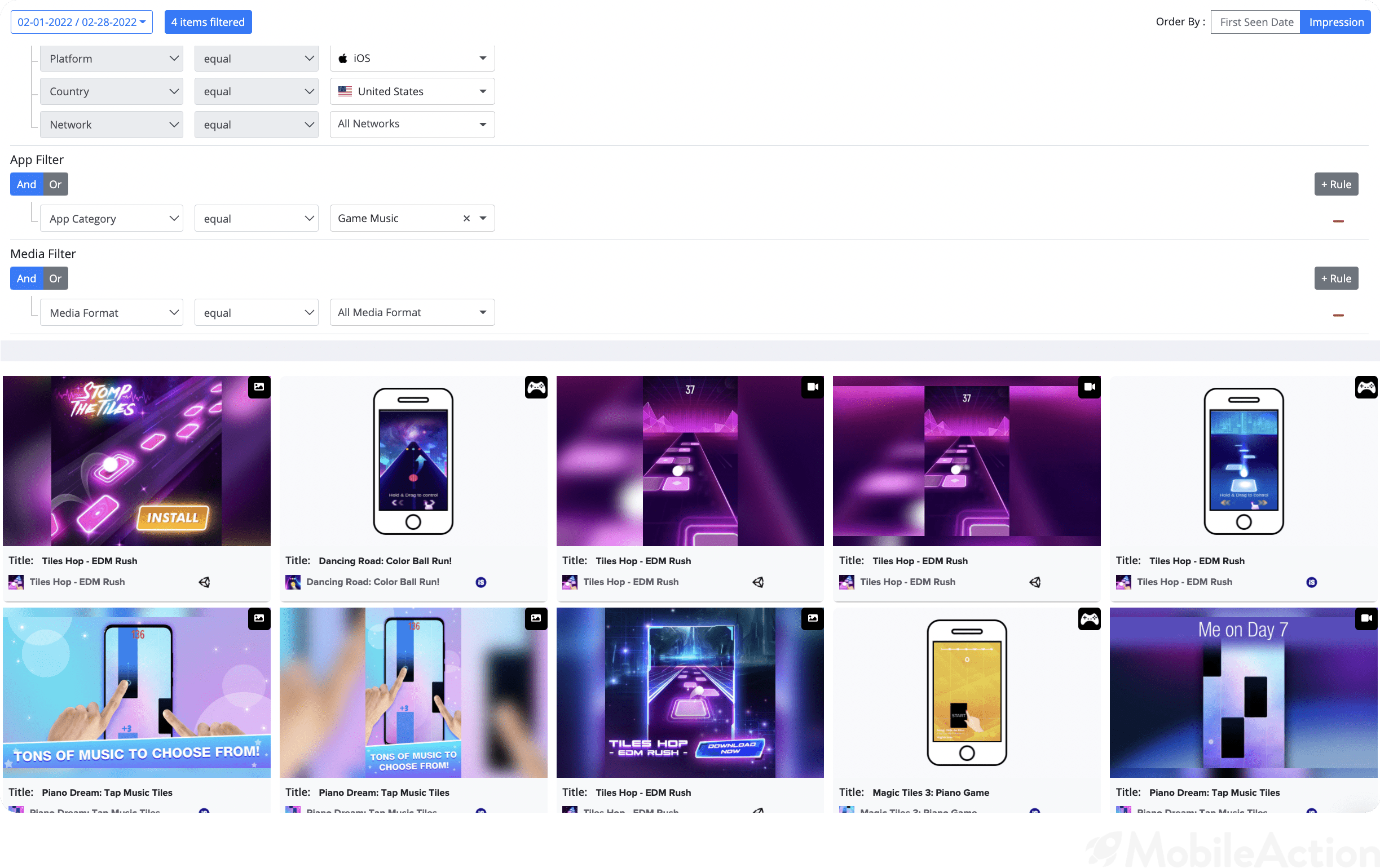
We adjusted our search to see the Top Creatives in all media types on iOS devices in the U.S and under the category of Game Music.
Even with a quick scan, you can tell that glowing colors are in demand for ads for music games. Moreover, you can see that Playable and Video ad formats are in lead as well.
Another prominence is user motivation and moods.
For instance, if users are seeking competition, they will most likely look for a leaderboard feature, or challenges. Meaning that you cannot expect them to engage with your app if you don’t showcase these features on your creative. Therefore, you need to accurately address the user motivation and moods to maximize your click-through rates.
Creative Information that can be utilized to improve marketing campaigns:
- Media Format
- Visual Elements
- User Motivations/Moods
App Marketers can produce contextual ads based on the data they collect from these subheadings.
Let’s have a look at the Creative Analysis of a few apps by utilizing our Ad Intelligence.
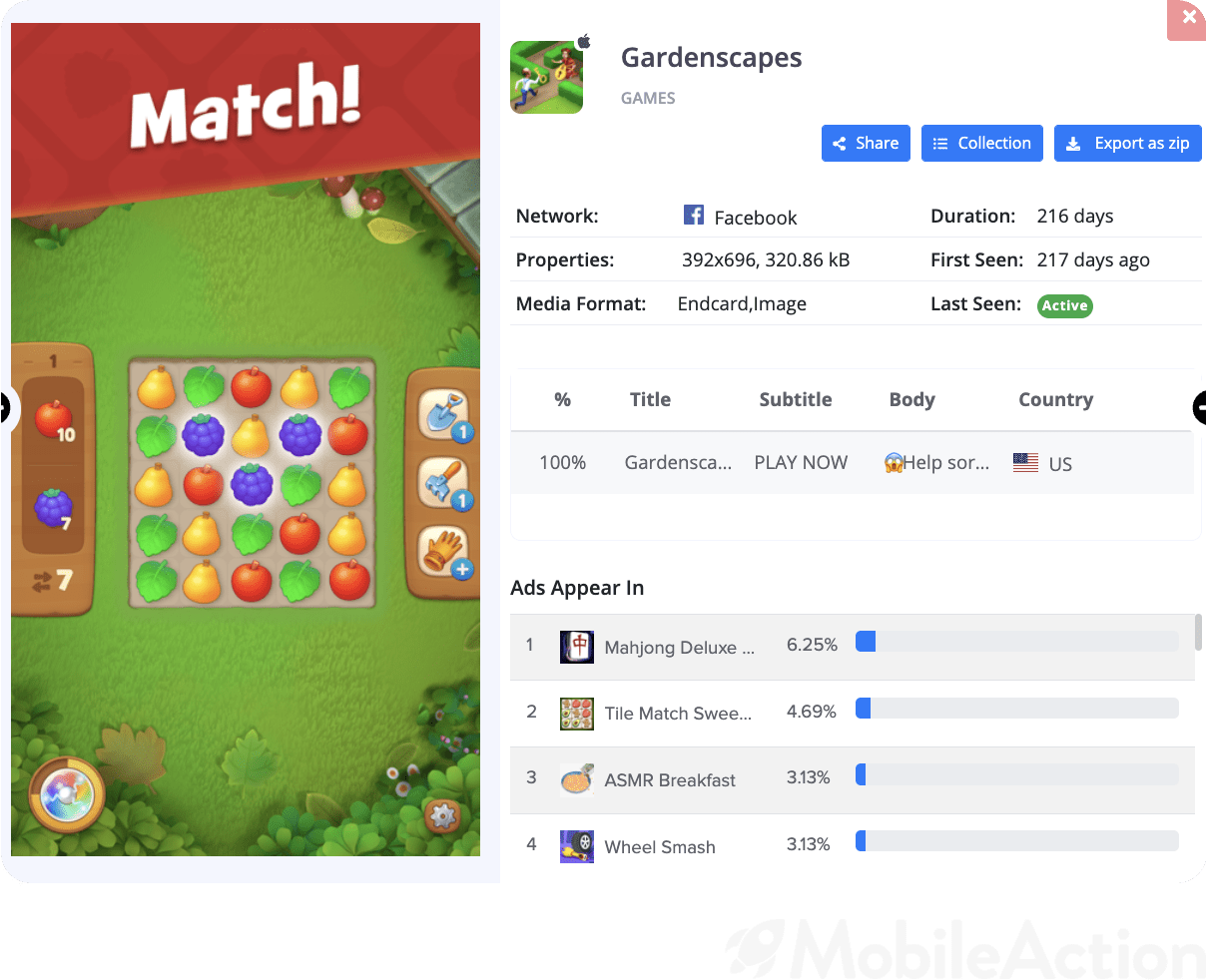
Above we see one of the best-performing ads of Gardenscapes, a match-three, and build&develop game. And if you look at the ad publishers, you will see that their ads appear in other match-three games such as Tile Match or Mahjong Deluxe.
A successful contextual ad targeting by Playrix because users who enjoy these apps might enjoy Gardenscapes as well. And this will bring higher TTRs and CRs.
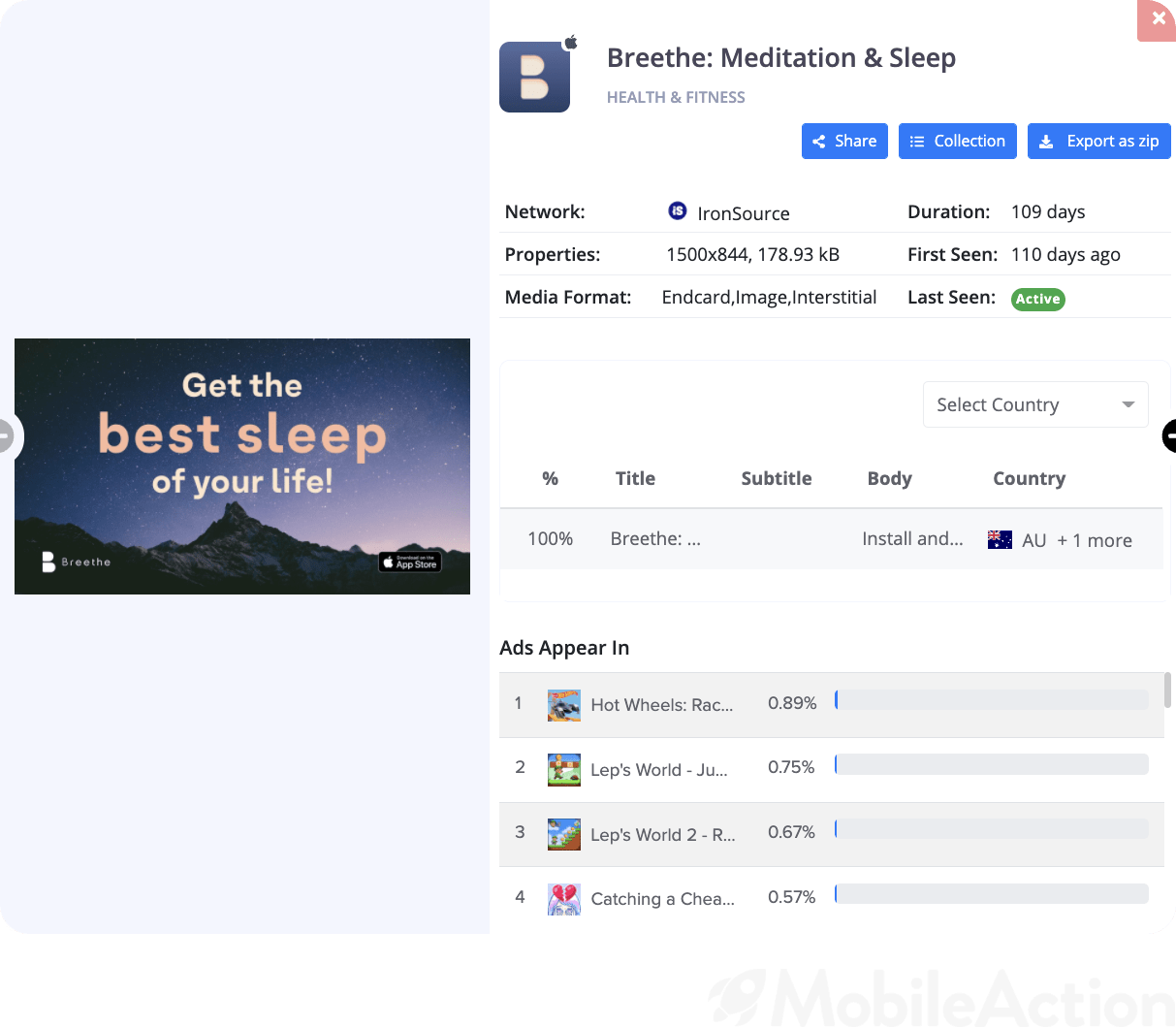
Breethe, on the other hand, doesn’t seem to be utilizing contextual ad targeting as their top ad publishers are mostly hyper-casual games. Instead, they could have direct their ads to yoga, meditation, or fitness apps to have better engagement rates.
Contextual Ad Targeting and Custom Product Pages to Maximize Mobile Growth
On the path to paid user acquisition, there await two difficult tasks the UA team must overcome in order to receive installs: attract and persuade.
Contextual Ads to attract, and Product Pages to persuade.
Let’s elaborate on this.
Your ads are the first stop users come to. We have already talked about how your ads must go to a relevant audience and be tailored to the tastes of the audience to optimize CTRs.
However, user acquisition does not end there. The next stop is your product page. Or rather your product pages. As you know quite well, your sub-audience groups no longer need to experience a cookie-cutter product page that was evidently not for everyone. Thanks to iOS 15 and up to 35 Custom Product Pages, you can now better address your sub-audience groups and drastically increase your conversion rates.
And contextual ad targeting combined with Custom Product Pages can be as powerful as Stormbreaker (Thor’s Hammer that killed Thanos) for app marketers in the post-IDFA era.
Now, let’s see how to build this two-headed marketing weapon.
Step 1: Determine Your Value-Propositions and Sub-Audiences
Assume that you have a travel app offering hotel reservations and car rentals. Under these features, you can divide your target audience into two sub-audience groups. For sure, you can have a lot more sub-audience groups as you continue categorizing by gender, age, or other criteria. For instance, Women who search for car rentals, men over 40 who search for hotel bookings and etc… It is up to the competency of your creative team and budget.
Step 2: Collect Data to Unveil The Oyster of Each Sub-Audience Group
Once you’re satisfied with your sub-audience groups, you should research some information you can learn about their personality type, such as what kind of apps they have, whether they are dark or light mode people, what region they live in, what types of creatives they interact better with, and so on.
In this way, you can create ads that suit each sub-audience group down to the ground.
As seen in the example above, Dating.com provides different texts, backgrounds, and visual elements for ad creatives sharing the same purpose in order to engage better with their audience.
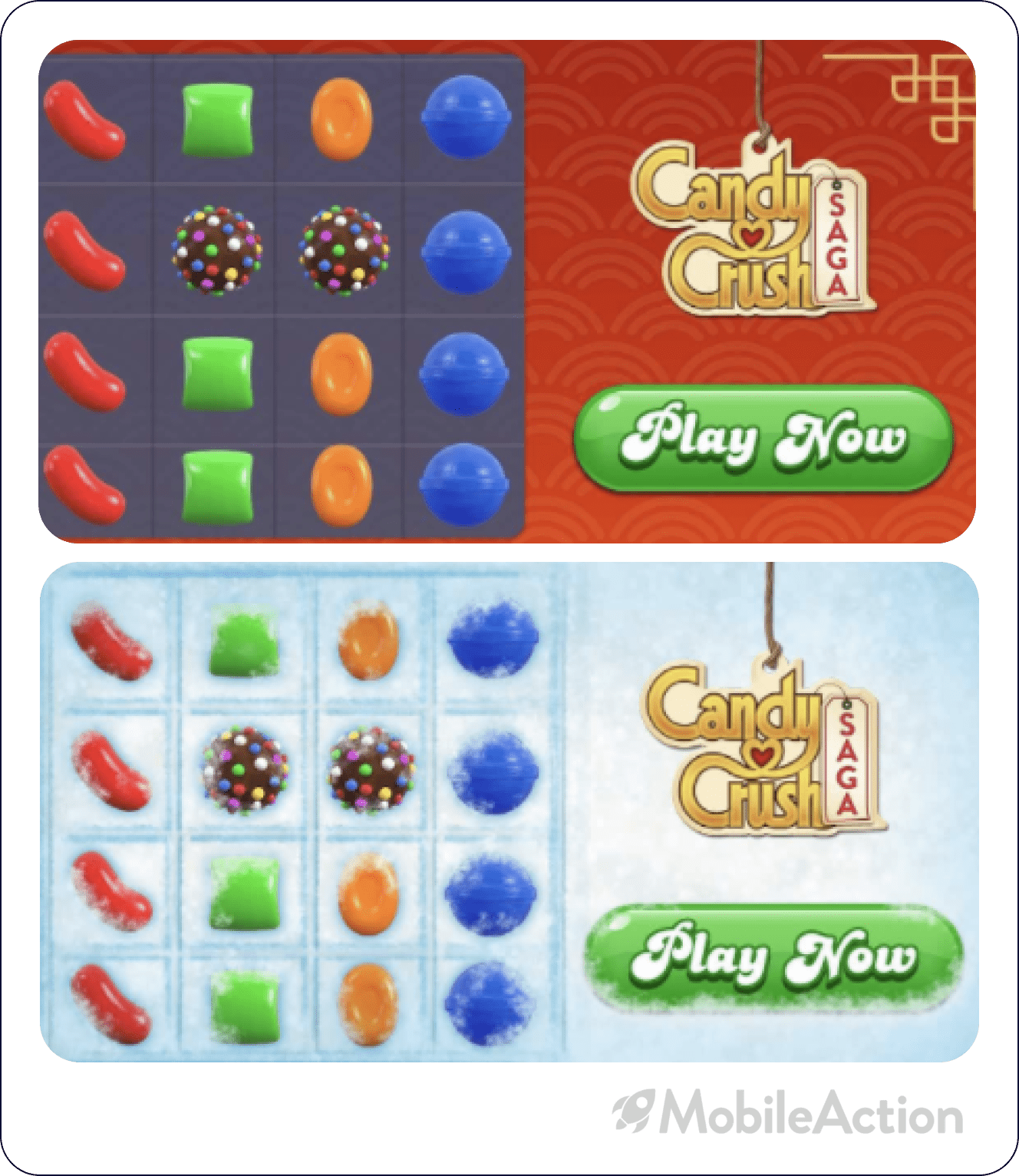
Step 3: Make Sure Each Sub-Audience Land on a Relevant Product Page
The user journey must be a straight line. Meaning that if a user engaged with your creative that reflects a certain theme or value proposition, you should welcome them with a product page that reflects that theme to provide a consistent experience and fulfill the expectations of the user.
Step 4: Test, Optimize and Iterate
The last step is, of course, the result monitoring. You need to test your hypothesis about your audience groups and creatives, strengthen the weak points in your contextual ad strategy and iterate.
Takeaways
- Behavioral targeting can no longer be a method for app marketers as it entirely depends on tracking the user’s historical data. Tracking this data now requires user compliance and the opt-in rate is pretty low.
- Contextual targeting steps forth as the new crown-holder marketing method in the post-IDFA era due to the advantages it provides for app marketers.
- Contextual targeting is cost-effective, complies with the digital privacy policies, and offers high ROAS and CRs.
- App marketers can collect app, device, and creative data to determine user behavior and generate contextual ads for their audience.
- For the best results, app marketers must know which sub-audience group interacts better with what creatives. For this matter, our 4-step structured model can be utilized.
A data-driven approach will save you time and money as you don’t try and fail based on inaccurate assumptions. In other words, instant and accurate data of ad publishers, ad networks, top creatives, and the market is essential for your growth. And the first step to that is to schedule a meeting with our experts!
